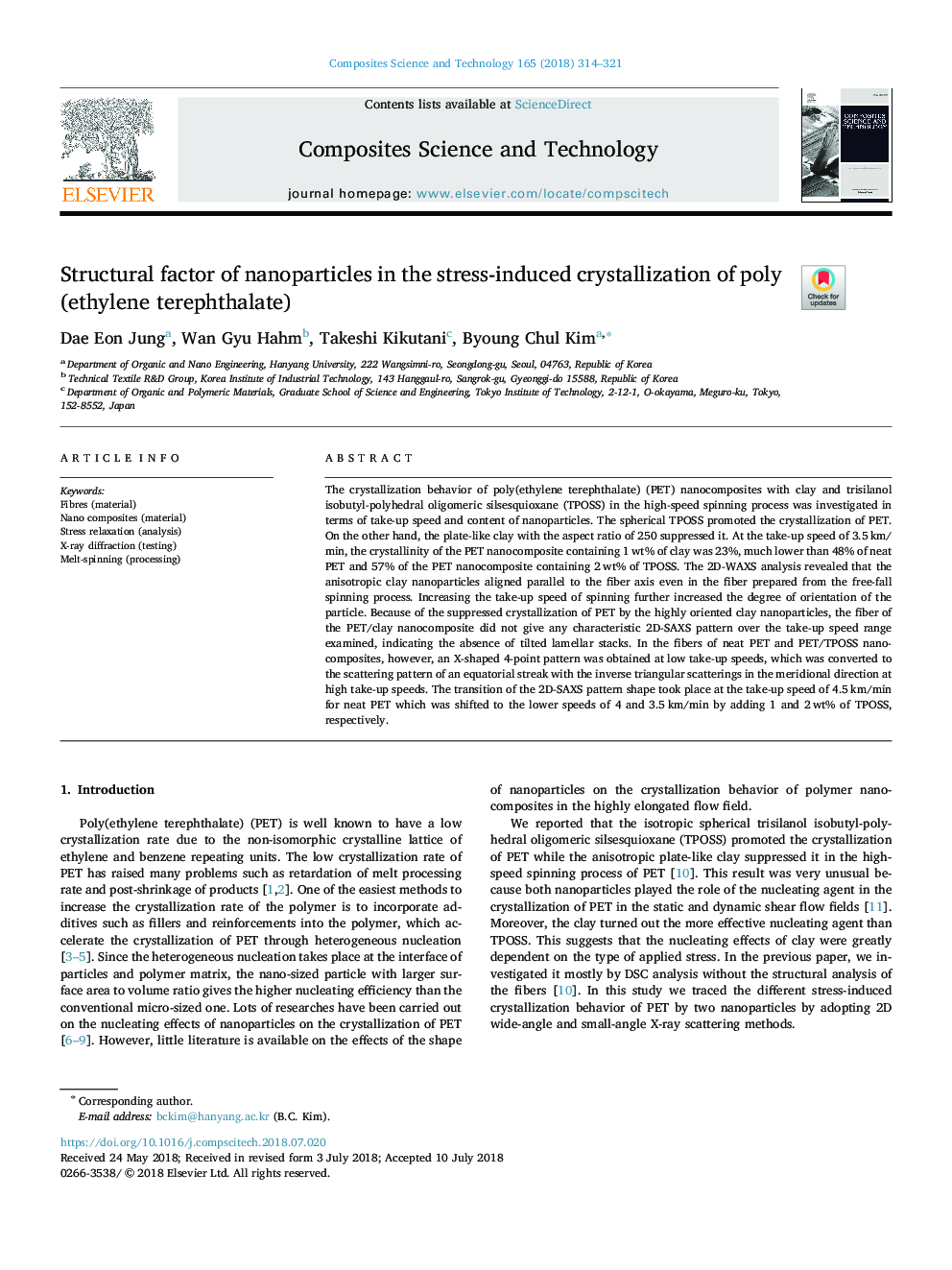| Article ID | Journal | Published Year | Pages | File Type |
|---|---|---|---|---|
| 7214139 | Composites Science and Technology | 2018 | 8 Pages |
Abstract
The crystallization behavior of poly(ethylene terephthalate) (PET) nanocomposites with clay and trisilanol isobutyl-polyhedral oligomeric silsesquioxane (TPOSS) in the high-speed spinning process was investigated in terms of take-up speed and content of nanoparticles. The spherical TPOSS promoted the crystallization of PET. On the other hand, the plate-like clay with the aspect ratio of 250 suppressed it. At the take-up speed of 3.5â¯km/min, the crystallinity of the PET nanocomposite containing 1â¯wt% of clay was 23%, much lower than 48% of neat PET and 57% of the PET nanocomposite containing 2â¯wt% of TPOSS. The 2D-WAXS analysis revealed that the anisotropic clay nanoparticles aligned parallel to the fiber axis even in the fiber prepared from the free-fall spinning process. Increasing the take-up speed of spinning further increased the degree of orientation of the particle. Because of the suppressed crystallization of PET by the highly oriented clay nanoparticles, the fiber of the PET/clay nanocomposite did not give any characteristic 2D-SAXS pattern over the take-up speed range examined, indicating the absence of tilted lamellar stacks. In the fibers of neat PET and PET/TPOSS nanocomposites, however, an X-shaped 4-point pattern was obtained at low take-up speeds, which was converted to the scattering pattern of an equatorial streak with the inverse triangular scatterings in the meridional direction at high take-up speeds. The transition of the 2D-SAXS pattern shape took place at the take-up speed of 4.5â¯km/min for neat PET which was shifted to the lower speeds of 4 and 3.5â¯km/min by adding 1 and 2â¯wt% of TPOSS, respectively.
Related Topics
Physical Sciences and Engineering
Engineering
Engineering (General)
Authors
Dae Eon Jung, Wan Gyu Hahm, Takeshi Kikutani, Byoung Chul Kim,
